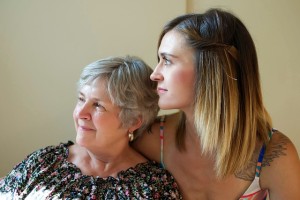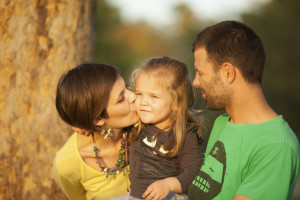- Calls to this hotline are currently being directed to Within Health or Eating Disorder Solutions
- Representatives are standing by 24/7 to help answer your questions
- All calls are confidential and HIPAA compliant
- There is no obligation or cost to call
- Eating Disorder Hope does not receive any commissions or fees dependent upon which provider you select
- Additional treatment providers are located on our directory or samhsa.gov
Body Image through the Generations
Contributor: Daphne Reinhart, LGPC, is a therapist specializing in the treatment of body image and eating disorders at The Body Image Therapy Center in Columbia, MD, and Washington, DC.

I think you get the picture. The message is typically lose weight, you’ll look (and possibly even feel) better. This message is received by minds that are sponges. The real message is often an outward reflection of their own self-scrutiny; society’s constant reinforcement of the thin ideal; and their own distorted body image that could perhaps be traced back to cinching corsets.
The Cultural Celebration of Food
It just so happens that in my family there was a deeply-rooted cultural celebration of food and camaraderie that must have served as a protective mechanism against eating disorders: I have yet to find a hint of an eating disorder in my family tree. My personal exposure to eating disorders was external, in my love and involvement in ballet.
There, I watched fellow dancers struggle to manage an unnaturally low weight for their genetic make-up and many fall captive to the grips of an eating disorder. The emphasis at that time was on a more skeletal appearance with the reasoning that the lights onstage would inevitably “add” those ten pounds.
I am pleased to see that anecdotally some of the emphasis in ballet has been partly taken off the thin ideal and perhaps placed more squarely on building strength and endurance, even if that means a prominent display of feminine power and muscle (think: Misty Copeland in her Under Armour commercial).
Generation-Level Undiagnosed Eating Disorders

Eating disorders can be influenced by the product of generations of dieting: dieters, raising dieters, even if just by example. Eating disorders also look different through the ages. It is entirely possible that a lifetime of following Weight Watchers and experiencing the accompanying weight fluctuations can finally morph disordered eating behaviors, ranging from binge eating to simply not feeling hungry, and subsequently restricting food intake.
Eating disorders that have grown roots at an early age and manifest later in life can be difficult to overcome. Both the habits and the psychological toll over the course of a near lifetime are deeply engrained in the client’s psyche. It seems that in these cases, the link to a generational eating disorder is typically present.
The Roots of Eating Disorders
It is important to note that eating disorders are not only rooted in genetics and influenced by family history, but also in the environment, i.e. where you live. According to data gathered by the Centers for Disease Control and Prevention in 2011, the average body mass index (BMI) in Los Angeles, the city of glamour, is lower than in other areas where the entertainment industry and the emphasis on looking “fit” regardless of age, number of pregnancies, and genetic makeup is perhaps less emphasized.
Where Thin Ideal Reigns
This is not to say that women in all cities across the United States are not subject to repeat images of boney models, but women who live in areas where the thin ideal reigns supreme seem much more likely to connect with their own self-judgment of their body and to steadfastly uphold themselves to that ideal.
You can almost see the thought bubble above a young mother: If that 40-something mother of three can don a slinky tank top and yoga pants without anything bulging, then certainly my body should be capable of the same? The focus of mothers in particular on their bodies post-pregnancy is striking.
“Baby Weight” and Fad Diets

The seed for an eating disorder can be influenced genetically and generationally and then perhaps watered and nurtured by the environment.
In the end, the threads of an eating disorder, both genetic and environmental, converge because the messages of weight control, the learned art of dieting, and the importance of maintaining what may be an unnatural body image, remains through the generations. A great deal of therapeutic work can be accomplished through identifying and exploring these body image patterns in hopes of healing this generation and breaking the intergenerational trends for the next generation.
Community Discussion – Share your thoughts here!
What changes have you or your loved one made in eating disorder recovery to improve your body image? Do you believe your positive body image changes have impacted those around you, in what way?
The opinions and views of our guest contributors are shared to provide a broad perspective of eating disorders. These are not necessarily the views of Eating Disorder Hope, but an effort to offer discussion of various issues by different concerned individuals.
Last Updated & Reviewed By: Jacquelyn Ekern, MS, LPC on June 25th, 2015
Published on EatingDisorderHope.com
